| |
9th HIV Persistance During Therapy Workshop;
Reservoirs & Eradication Strategies Workshop
|
| |
| |
Reported by Christina K. Psomas MD PhD
Department of Infectious Diseases and Internal Medicine
European Hospital Marseille
Over 4 days 410 scientists from all over the world shared their unpublished data about HIV Persistence during therapy, in Miami, Florida. The 9th edition of the Reservoirs and Eradication Strategies International Workshop was as sparkling as its first draught in 2003 in St Maarten, with vibrant discussions and warm exchanges. Topics included HIV latency, model studies of HIV persistence, virology and immunology of HIV persistence, drug development as well as new therapeutic approaches. Young investigators were the "honour guests" having being encouraged for presentations and scholarships for attendance.
In this article, we report the discussions as closely as possible; however all the workshop abstracts can be found online at www.viruseradication.com.
Multispecific anti-HIV duoCAR-T cell therapy may offer a path towards a functional cure for HIV when combined with strategies that target the HIV reservoir. Adoptive immunotherapy using chimeric antigen receptor (CAR) modified T-cells has shown unprecedented success for the treatment of refractory B-cell malignancies. Past attempts using 1st generation CD4ζ CAR-T cells for the treatment of HIV were unsuccessful in humans despite long-term persistence of the gene-modified T cells. Targeting multiple well-conserved and non-redundant sites on the HIV envelope glycoprotein (Env) is a new strategy used by Lentigen technology Inc., a Miltenyi Biotec Company for anti-HIV CAR-T cell therapy, by engineering a two-molecule architecture termed duoCAR. The HIV-1-based multi-specific duoCAR-T lentiviral vectors (LV) used here efficiently modify primary T cells (especially CD4+) to express anti-HIV CAR capacity. Challenging CAR-T cells with donor-matched PBMCs infected with a global panel of replication-competent infectious molecular clones of HIV that encode a Renilla luciferase reporter (Env-IMC-LucR) in vitro, researchers showed that multi-specific duoCAR-T cells broadly suppress HIV infection by up to 99% being superior to monoCAR-T cells, and that CD4-enriched multi-specific anti-HIV CAR-T cells are protected from HIV infection. When authors repeated the same experience in humanised mice, they observed potent in vivo HIV suppression, rescue of CD4+ T cell depletion, as well as persistence of CAR-T cells. Authors now plan to further interrogate duoCAR-T cell efficacy in more stringent humanized mouse models starting with ART-suppressed donor CAR-T cells and assessing CAR-mediated elimination of reactivated HIV-infected cells, as well as a phase I/IIa clinical trial at UCSF, and later at Jacobi Medical Center to evaluate the safety and efficacy of duoCAR-T cell therapy.
K. Anthony-Gonda, A. Bardhi, A. Ray, et al. Multispecific anti-HIV duoCAR-T cell therapy mediates robust HIV suppression and elimination of HIV-infected cells in humanised mice. 9th edition of HIV Persistence during Therapy: Reservoirs and Eradication Strategies Workshop, 10-13 December, 2019, Miami. Abstract OP 6.1.
K. Anthony-Gonda, A. Bardhi, A. Ray, et al. Multispecific anti-HIV duoCAR-T cells display broad in vitro antiviral activity and potent in vivo elimination of HIV-infected cells in a humanised mouse model. Science Translational Medicine 2019 Aug 7;11(504).
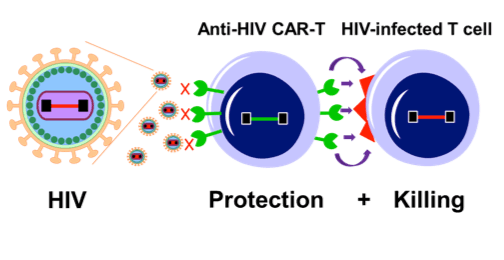
CD4-MBL-CAR/CXCR5 transduced T cells successfully accumulate in B cel follicles and contact viral RNA+ cells resulting in decrease of viral RNA in some animals. The problem with chronic HIV-1 and SIV infections is that HIV/SIV virus replication is concentrated within B cell follicles of secondary lymphoid tissue (SLT), while virus-specific CTL (CD8 T cells) are largely excluded from these sites. High levels of follicular SIV-specific CTL inversely correlate with levels of follicular viral replication and with plasma viral loads. Authors hypothesized that T cells co-expressing the B cell follicle homing molecule, (CXCR5) and an SIV-specific chimeric antigen receptor (CD4-MBL-CAR) could home to B cell follicles and target the follicular reservoir of viral replication resulting in better control of viremia and in durable remission of HIV. Authors used RNAScope in situ hybridization combined with immunohistochemistry on paraffin-embedded lymphoid tissue sections to determine the location, abundance, and persistence of the CAR/CXCR5 T cells. In a pilot CD4-MBL-CAR/CXCR5 T cell immunotherapy study assessing 3 ART- suppressed SIV-infected rhesus macaques treated with CD4-MBL-CAR/CXCR5 transduced autologous T cells and 3 controls suggested that CD4-MBL-CAR/CXCR5 T cells accumulate in the B cell follicles, expanding with inside and outside the follicles. Even if the presence of these cells in B cell follicles is transient, > 90% of follicles had CD4-MBL-CAR/CXCR5 T cells at day 6, and 2/3 animals showed less viral RNA in situ at 28 day post-transfusion (DPT) and less FDC+ free virions. Levels of CAR modified T cells declined in the follicular area after 6 DPT, and declined faster in the animal that did not control SIV after transfusion of CAR/CXCR5 T cells.
H. Abdelaal, M. Pampusch, P. Skinner et al. Location, abundance and persistence of CAR/CXCR5 transduced T cells within lymphoid tissues of SIV- infected rhesus macaques. 9th edition of HIV Persistence during Therapy: Reservoirs and Eradication Strategies Workshop, 10-13 December, 2019, Miami. Abstract OP 6.2.
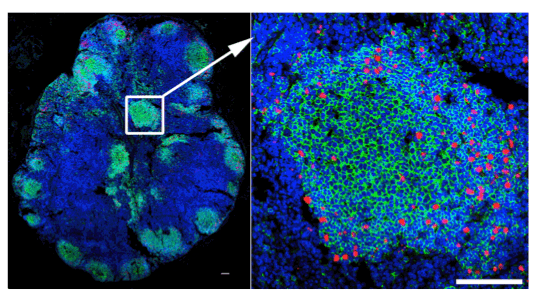
Figure 1. CD4-MBL-CAR/CXCR5 T cells accumulate in the B cell follicle.
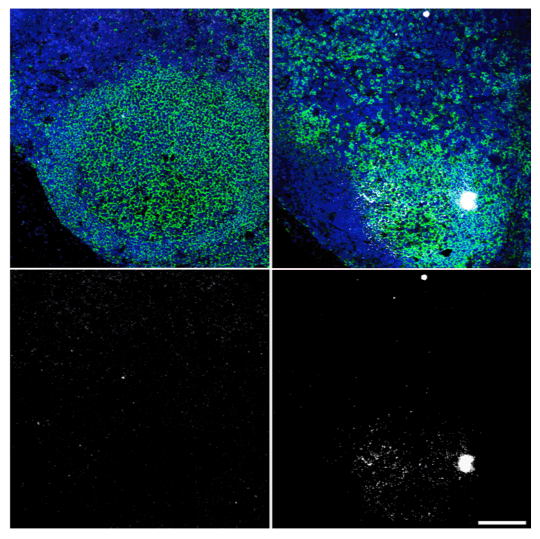
Figure 2. 2/3 treated animal showed less vRNA in situ at 28 DPT.
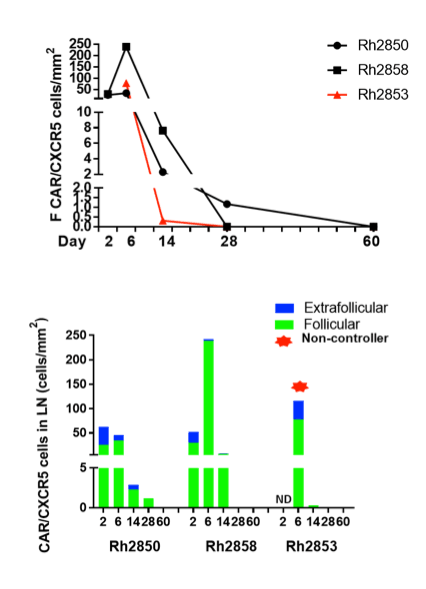
Figures 3 and 4. CD4-MBL-CAR/CXCR5 T cell persistence.
Combination of Inhibitors of Apoptosis antagonists (IAPa; also known as second mitochondrial-derived activator of caspases mimetics) with HIV latency reversal agents (LRAs) of distinct mechanistic classes enhance the magnitude and potency of HIV latency reversal in vitro. HIV latency reversal agents (LRAs) has been of limited efficacy because of clinical safety issues, and when administered in tolerated regimens with clearance agents, LRAs have not convincingly demonstrated an impact on the functional viral reservoir. LRAs combinations may (1) reactivate a broader population of latent proviruses, (2) induce higher levels of proviral expression in individual latently infected cells, as well as (3) potentiate latency reversal activity at lower drug exposures for LRAs that have dose-limiting toxicities. Authors did a targeted screening for combination activity of IAPi (AZD5582) with LRAs of distinct mechanistic classes, such as histone deacetylase inhibitors (HDACi) (VOR and PANO), bromodomain inhibitors (BETi) (JQ1, iBET151), toll-like receptor 7 agonists (TLR7a) (GS-9620), protein kinase C agonists (PKCa) (Ingenol B), HMTi (GSK343) and Disulfiram using the Bliss Independence model. While IAPi and HDACi have combination activity limited to higher exposures of HDACi, IAPi and BETi have synergistic LRA activity that reactivate a broader population of latent proviruses relative to single agents in a Jurkat model of latency. IAPi and BETi also synergize at non-toxic concentrations to increase HIV transcription (cell-associated gag RNA) in resting CD4 T cells from ART-suppressed donors. This IAPi/BETi synergy seems to be dependent on NF-κB signaling and may involve BRD4. These findings highlight the combinatorial activity between IAPa + HDACi and IAPa + BETi for HIV latency reversal in vitro. Further evaluation of the ability of these combinations to induce expression of latent virus in vivo (HIV antigen production in resting CD4 T cells) as part of an approach to reduce the viral reservoir is warranted.
Shane D. Falcinelli, David M. Irlbeck, Anne-Marie Turner, et al. Combinatorial latency reversal activity of inhibitor of apoptosis antagonists with mechanistically distinct classes of HIV latency reversal agents. 9th edition of HIV Persistence during Therapy: Reservoirs and Eradication Strategies Workshop, 10-13 December, 2019, Miami. Abstract OP 6.3.
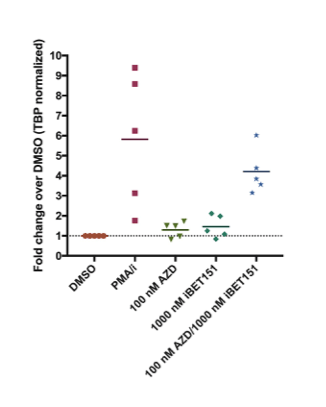
Figure 5. IAPi and BETi synergize to increase HIV transcription in resting CD4 T cells from ART-suppressed donors.
Adeno-associated virus (AAV) vectors-delivered rhesus macaque version of eCD4-Ig (rh-eCD4-Ig) expressed by muscle cells can suppress SHIV-AD8 viremia over a year after cART withdrawal. eCD4-Ig (antibody-like, HIV entry inhibitor mediating potent ADCC, more difficult to escape than bNAbs) is a broad and potent HIV-1 inhibitor that neutralizes all HIV-1, HIV-2, and SIV isolates tested to date. Its rhesus macaque version can be expressed in macaques using AAV vectors. Ten rhesus macaques were infected with SHIV-AD8 and treated with daily cART. When viremia was below the limits of detection (<15 viral RNA copies/mL), six macaques were inoculated with AAV8 and AAV1 vectors encoding rh-eCD4-Ig and four macaques were le untreated. cART was interrupted at 2-4 weeks after the second AAV inoculation. All 10 macaques had viral rebound 1-4 weeks a er cART withdrawal, although macaques treated with AAV-rh-eCD4-Ig had lower rebound viremia. Viremia is currently suppressed in all six treated macaques (<100 viral RNA copies/mL), with four macaques at below the limits of detection where control animals ranged from 1400-7000 viral RNA copies/mL before being taken off study. Further optimization improving the transgene cassette of the AAV vectors to increase the concentrations of expressed rh-eCD4-Ig (Testing different AAV capsids or promoters, developing new techniques to overcome host immune response or improving eCD4-Ig), this therapy may become a replacement to daily cART.
M. Gardner, M. Davis-Gardner and M. Farzan. Replacing daily cART with AAV-expressed eCD4-Ig. 9th edition of HIV Persistence during Therapy: Reservoirs and Eradication Strategies Workshop, 10-13 December, 2019, Miami. Abstract OP 6.5.
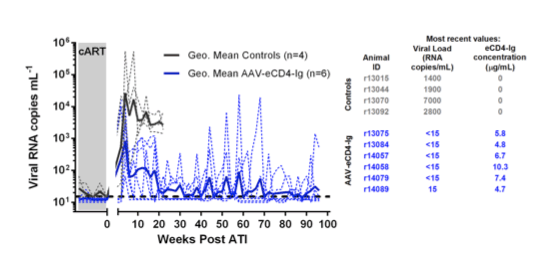
Figure 6. Summary of functional cure studies with rh-eCD4-Ig.
Durable, continuous antibody expression can be achieved after one single administration of adeno-associated virus (AAV) and support the potential for a) lifelong protection against HIV acquisition and b) stringent and lifelong suppression of viral loads, both from a single vector administration. Long-term vectored delivery of broadly neutralizing anti-HIV antibodies using AAV has been previously reported by this group of researchers both in terms of prevention, and in termes of treatment. In terms of prevention, monkey 84-05 achieved high levels of AAV-delivered anti-SIV antibody 5L7 and has successfully maintained 250 μg/ml of 5L7 in circulation for over 6 years (half of the monkey's life so far), representing approximatively 2% of the circulating IgG in this monkey, without host anti-antibody (anti-drug antibody or ADA) responses. In terms of treatment, monkey rh2438 continues to be suppressed (4 years and counting) and expressing high levels of 2/3 AAV-delivered antibodies. Additionally, the authors presented two other macaques, r14121 and r14097, having complete viral load suppression for over 11 months, both showing substantial antibody levels of delivered PGT128 and N6 after two recombinant AAV vectors expressing IgG1 versions of the selected antibodies (at 36 and 60 weeks post-infection). Even if this approach seems promising, anti-antibody responses are an issue that needs to be overcome.
J. Martinez-Navio, R. Desrosiers, S. Fuchs, et al. How long is long-term? Delivery of anti-HIV antibodies using AAV vector. 9th edition of HIV Persistence during Therapy: Reservoirs and Eradication Strategies Workshop, 10-13 December, 2019, Miami. Abstract OP 8.2.
Martinez-Navio JM, Fuchs SP, Pantry SN, et al. Adeno-Associated Virus Delivery of Anti-HIV Monoclonal Antibodies Can Drive Long-Term Virologic Suppression. Immunity. 2019 Mar 19;50(3):567-575.
Fuchs SP, Martinez-Navio JM, Piatak M Jr, et al. AAV-Delivered Antibody Mediates Significant Protective Effects against SIVmac239 Challenge in the Absence of Neutralizing Activity. PLoS Pathog. 2015 Aug 6;11(8):e1005090.
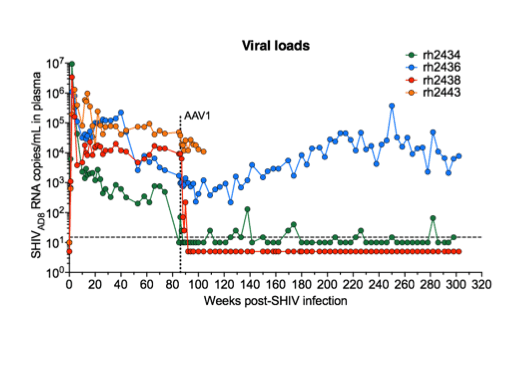
Figure 7. Impressive levels of viral load suppression in rh2438 when monoclonal antibodies are AAV-delivered in infected animals.
Efforts based on the antiproliferative approach (auranofin/nicotinamide) in combination with ART intensification and immunity boosting seem to impact on viral DNA and to improve post-analytical treatment interruption (ATI) control of viral load. The SPARC-7 TRIAL interventions (Federal University of Sao Paulo, Brazil) [NCT02961829] is a multi-interventional study targeting HIV-1 residual replication (treatment intensification), latently infected T cells (nicotinamide and gold salt auranofin) and viral sanctuaries (dendritic cell vaccine). The following treatments were conducted in parallel for 48 weeks: G1) baseline ART continuation, G2) ART + dolutegravir/maraviroc intensification, G3) ART + dolutegravir/maraviroc + nicotinamide, G4) ART + dolutegravir/maraviroc + nicotinamide + auranofin, G5) ART + dolutegravir + personalized dendritic cell vaccine based on HLA-matched Gag epitopes and designed by the study investigators, G6 baseline ART + dolutegravir + nicotinamide + auranofin + vaccine as above. Auranofin was used for the first 24 weeks. Five individuals were randomized to each group. There were no severe adverse events. Viral HIV DNA decrease to undetectable levels was observed only in G6 at 48 weeks (per-protocol analysis: p=0.022; Odds ratio: 9.75, 95%CL: 1.1-72.39). A significant reduction of HIV total DNA and immune inflammation CD8CD38 markers were observed among study subjects who received the combined interventions (group 6). Following ATI in 25 individuals, VL rebound in G6 was significantly lower than in the other groups. Mean time for viremia was 28.2 days. There were 3 post-treatment controllers (1 of group 3 and 2 of group 6) of which one stays suppressed 8 months after ATI.
R. Sobhie Diaz, L.B. Giron, J. Galinskas, et al.
Post-therapy viral set-point abatement following combined antiproliferative and immune-boosting interventions: results from a randomised
clinical trial. 9th edition of HIV Persistence during Therapy: Reservoirs and Eradication Strategies Workshop, 10-13 December, 2019, Miami. Abstract OP 8.6.
Diaz RS, Shytaj IL, Giron LB, et al. Potential impact of the antirheumatic agent auranofin on proviral HIV-1 DNA in individuals under intensified antiretroviral therapy: Results from a randomised clinical trial. Int J Antimicrob Agents. 2019 Nov;54(5):592-600.
Ricardo S. Diaz, Leila B. Giron, James Hunter, et al. Randomized trial of impact of multiple interventions on HIV reservoir: SPARC-7 trial. Conference on retroviruses and opportunistic infections, March 4-7, 2019, Seattle, Washington, Abstract 399.
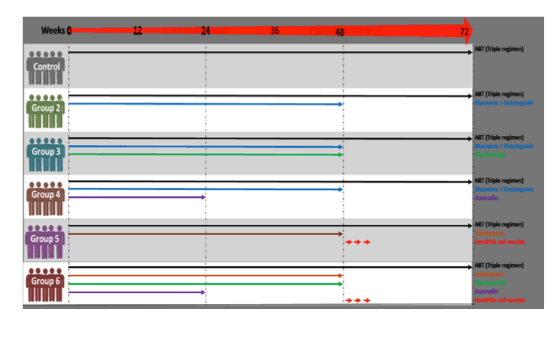
Figure 8. Design of different groups of interventions in the SPARC-7 trial.

Figure 9. Total HIV DNA decrease over time.
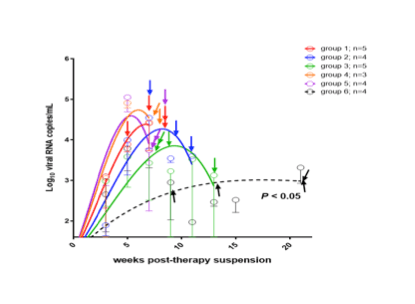
Figure 10. Evolution in time of viral loads from all study subjects following ATI. The length of the curve and its elevation in time are indicative of the control of viremia. The P value reported is representative of both parameters. Arrows in different colors show the therapy reestablishment for each study subject.
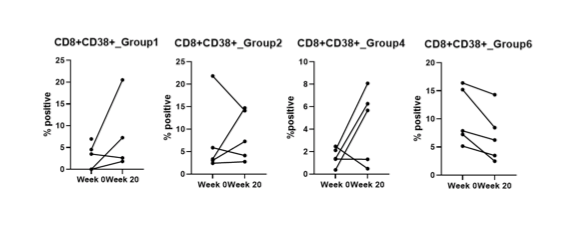
Figure 11. To exclude contribution of pre-therapy VLs to post-treatment VL control, pre- and post-ART VL set points of G6 were compared, resulting in a significant difference.
Figure 12. Effect of ART intensification, nicotinamide and auranofin on CD8+ T-cell activation.

Figure 13. Post-therapy controllers from group 6 (all therapeutic interventions) and group 3 (intensified ART + nicotinamide). Follow-up is still ongoing.
|
|
| |
| |
|
|
|